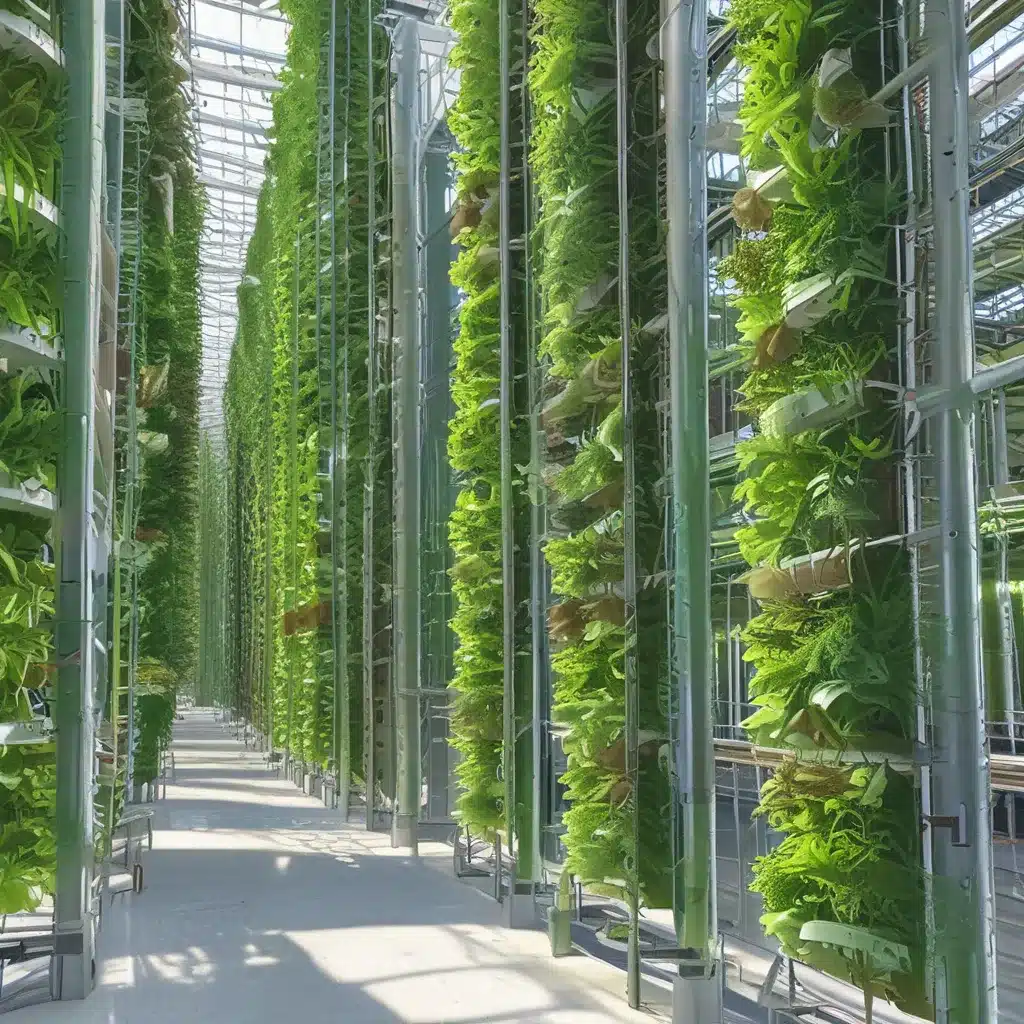The Race to Save the Planet
As an environmentally conscious society, we’re in a race against time to find sustainable solutions that can power our future. And let me tell you, the competition is fierce! But have no fear, my friends – I’ve got two technological titans in my corner that are poised to revolutionize the way we think about energy and food production.
Reaching New Heights with Vertical Farming
First up, we’ve got vertical farming – the practice of growing crops in vertically stacked layers, often in controlled indoor environments. Now, I know what you’re thinking, “Vertical farming? Isn’t that just a fancy way of saying ‘growing plants in a box’?” Well, my friend, let me tell you, there’s nothing basic about this approach.
Vertical farms are like skyscrapers for your veggies, allowing us to produce more food in less space. By stacking the crops, we can maximize the use of our precious land resources, all while reducing the environmental impact of traditional farming. And get this – these high-tech farms can yield up to 390 times more produce per square foot compared to traditional outdoor farming! That’s a whole lot of lettuce, folks!
But the benefits don’t stop there. Vertical farms also use up to 95% less water than conventional methods, and they can even be powered by renewable energy sources like solar and wind. It’s a win-win-win situation – more food, less environmental strain, and a whole lot of green (both literally and figuratively).
Diving into Algae-Based Biofuels
Now, let’s talk about our second technological titan: algae-based biofuels. While the concept of turning pond scum into fuel might sound a bit far-fetched, trust me, it’s a game-changer in the making.
Algae are these incredible little organisms that can convert sunlight, water, and carbon dioxide into all sorts of valuable products, including biofuels. And the best part? They can do it at a rate that puts even the most efficient crops to shame. In fact, some species of microalgae can transform up to 10% of the solar energy they absorb into biomass! That’s a pretty impressive feat, if I do say so myself.
But the real magic happens when we harness that biomass to produce biofuels. These algae-derived fuels are renewable, sustainable, and – get this – they’re even better for the environment than their fossil fuel counterparts. How so, you ask? Well, for starters, they have significantly lower sulfur emissions, and they’re actually oxygenated, which means they burn cleaner and more efficiently.
And let’s not forget about the carbon sequestration aspect. Algae are natural experts at sucking up CO2 from the atmosphere, with some species capable of fixing a whopping 1.83 kilograms of CO2 per kilogram of biomass produced. Talk about a green thumb!
The Future is Now
Now, I know what you’re thinking – if these technologies are so amazing, why aren’t we drowning in vertical farms and algae-fueled cars already? Well, my friends, the answer lies in the age-old battle between innovation and implementation.
The truth is, both vertical farming and algae-based biofuels are still relatively new and emerging technologies. There are challenges to overcome, from scaling up production to optimizing the various processes involved. But trust me, the brightest minds in science and engineering are working around the clock to make these solutions a reality.
Just take a look at the progress already being made. Companies like itFix are investing heavily in the development of these cutting-edge technologies, and governments around the world are offering incentives and regulations to encourage their adoption. And with the ever-increasing demand for sustainable energy and food sources, I have no doubt that these innovations will soon become the norm rather than the exception.
A Greener, Cleaner Future
So, there you have it, folks – the dynamic duo of vertical farming and algae-based biofuels, poised to transform the way we power our world and nourish our bodies. And let me tell you, the future has never looked greener.
Imagine a world where our cities are dotted with towering vertical farms, providing fresh, local produce year-round, while our vehicles run on clean, renewable fuels derived from the very air we breathe. It’s a vision that’s not only attainable but necessary if we want to secure a sustainable future for generations to come.
So, let’s embrace these innovative solutions, roll up our sleeves, and get to work. The clock is ticking, and the future of our planet is at stake. But with the power of technology and the determination of a global community, I know we can rise to the challenge and create a greener, cleaner world for all.













